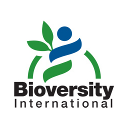Genome sequence of the pea aphid Acyrthosiphon pisum.
| Title | Genome sequence of the pea aphid Acyrthosiphon pisum. |
| Publication Type | Journal Article |
| Year of Publication | 2010 |
| Corporate Authors | International Aphid Genomics Consortium |
| Journal | PLoS biology |
| Volume | 8 |
| Pagination | e1000313 |
| Date Published | 2010 Feb |
| ISSN | 1545-7885 |
| Keywords | Animals, Aphids, Buchnera, Gene Transfer, Horizontal, Genome, Insect, Symbiosis |
| Abstract | Aphids are important agricultural pests and also biological models for studies of insect-plant interactions, symbiosis, virus vectoring, and the developmental causes of extreme phenotypic plasticity. Here we present the 464 Mb draft genome assembly of the pea aphid Acyrthosiphon pisum. This first published whole genome sequence of a basal hemimetabolous insect provides an outgroup to the multiple published genomes of holometabolous insects. Pea aphids are host-plant specialists, they can reproduce both sexually and asexually, and they have coevolved with an obligate bacterial symbiont. Here we highlight findings from whole genome analysis that may be related to these unusual biological features. These findings include discovery of extensive gene duplication in more than 2000 gene families as well as loss of evolutionarily conserved genes. Gene family expansions relative to other published genomes include genes involved in chromatin modification, miRNA synthesis, and sugar transport. Gene losses include genes central to the IMD immune pathway, selenoprotein utilization, purine salvage, and the entire urea cycle. The pea aphid genome reveals that only a limited number of genes have been acquired from bacteria; thus the reduced gene count of Buchnera does not reflect gene transfer to the host genome. The inventory of metabolic genes in the pea aphid genome suggests that there is extensive metabolite exchange between the aphid and Buchnera, including sharing of amino acid biosynthesis between the aphid and Buchnera. The pea aphid genome provides a foundation for post-genomic studies of fundamental biological questions and applied agricultural problems. |
| DOI | 10.1371/journal.pbio.1000313 |
| Alternate Journal | PLoS Biol. |



